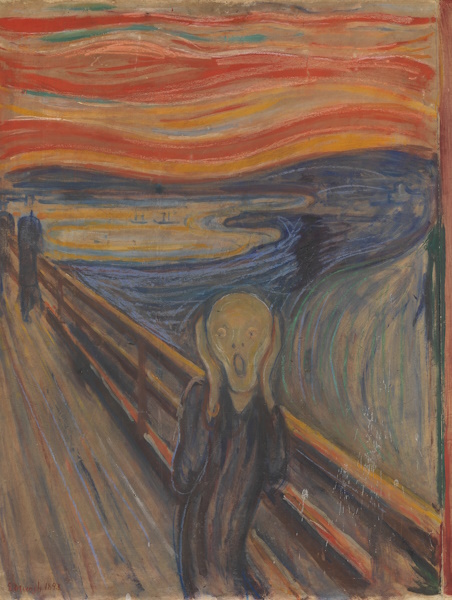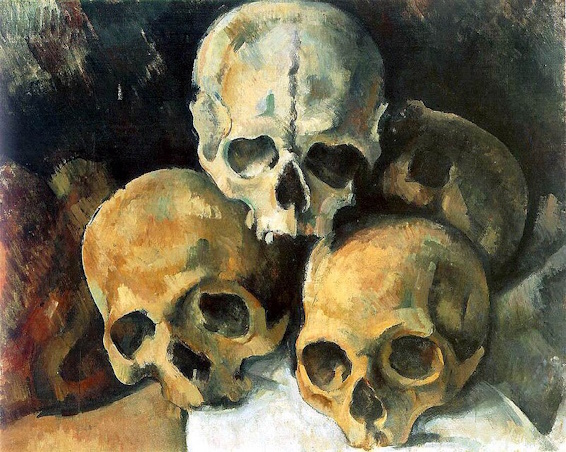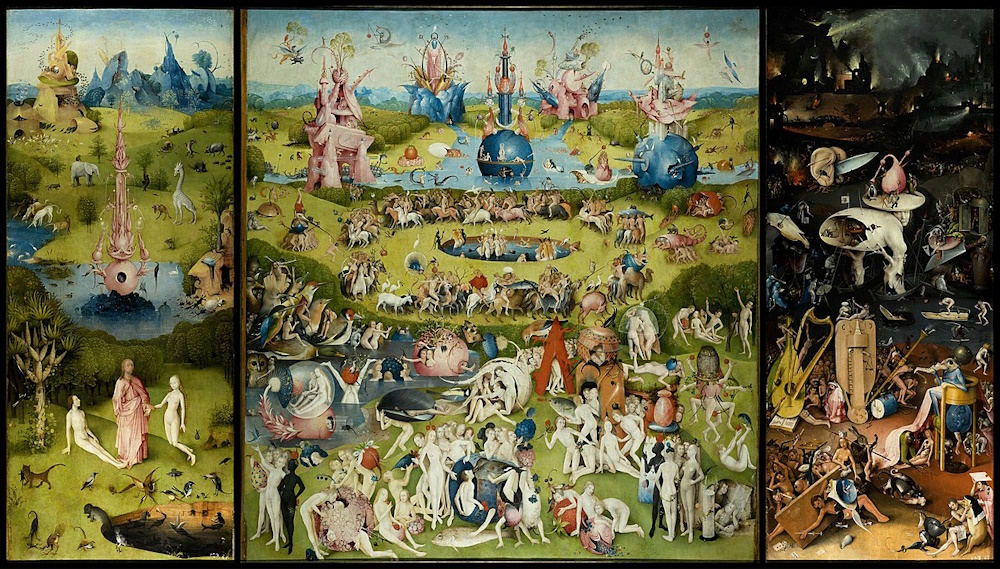We're just gonna lay our cards on the table, we're willing to bet that some of you would describe yourselves as "weird" or "strange". Not to worry, we definitely are!
So, embrace your weirdness at this spooky time of year & join us as we take a look at some of the darkest, spookiest artworks out there. The art world has long given a voice to the voiceless, with cultures, beliefs, worldviews & human experiences from across the globe expressed honestly & openly.
It just happens that sometimes, that voice can be a little... unsettling.
.

"The Scream"
Edvard Munch · 1893
Starting out with quite possibly the most instantly recognisable, often parodied & never bested piece on our list, The Scream from Norwegian artist Edvard Munch.
Described by Arthur Lubow as “an icon of modern art, a Mona Lisa for our time”, this composition is widely interpreted as representing the universal anxiety of modern humanity, with the imagery likened to symptoms of depersonalization disorder such as a feeling of distortion in one’s environment & self.
You would be forgiven for thinking that this horrifying visage came to Munch in a dream (or nightmare), possibly stemming from hidden anxieties & subconscious horrors. Amazingly however, it was inspired by a real-world location & an odd natural phenomenon... we’ll let Edvard speak for himself, with this excerpt from his diary:
“One evening I was walking along a path, the city was on one side and the fjord below. I felt tired and ill. I stopped and looked out over the fjord – the sun was setting, and the clouds turning blood red. I sensed a scream passing through nature; it seemed to me that I heard the scream. I painted this picture, painted the clouds as actual blood. The color shrieked. This became The Scream.”
.

"Skull of a Skeleton with Burning Cigarette"
Vincent Van Gogh · 1886
Look, we’ve all seen that one episode of Doctor Who (you know the one), so we won’t bore you all with the life & unfortunate circumstances of Vincent Van Gogh. Instead, we’re going to look at a lesser-known piece... a small, undated oil-on-canvas painting.
Painted whilst he was studying at the Royal Academy of Fine Arts in Antwerp, at the time it was common practice to study human skeletons, in order to develop a deeper understanding of human anatomy. This piece seems by all accounts to be a satirical piece based around these academic practices (with Van Gogh himself later stating he found the Academy boring & they had nothing to teach him).
Although often seen as a possible criticism of smoking, with the wonderfully detailed skeleton enjoying a cigarette, Van Gogh himself was a keen smoker, so this seems to have been added as a simple visual gag.
Honestly, it’s more fun to imagine a classic master of the craft sitting in a classroom in 1886 like “Sure, I’ll draw a skeleton... he’s gonna be cooler than any of yours & he’ll smoke cool cigarettes too!”. Finally, something we & Van Gogh have in common!
.

"Pyramid of Skulls"
Paul Cézanne · 1901
Working in isolation for the last decade of his life, Cézanne frequently alluded to mortality in both his letters & his work, writing (amongst other things); “For me, my life has begun to be deathly monotonous” and “As for me, I’m old. I won’t have time to express myself”.
This preoccupation with death was an ongoing theme identifiable through a number of still life skull paintings he produced in both oils & watercolours between 1898 – 1905. The painting above is one of the most recognisable, painted using oil-on-canvas, the composition is notable for the closeness of the skulls to the viewer.
Also, skulls are just universally awesome and cool and rad and sick.
.

"The Garden of Earthly Delights"
Heironymous Bosch · 1505
A triptych painted using oil colours on an oak panel, this is the oldest piece included on our list, from Netherlandish master Heironymous Bosch.
Part of a series of several additional triptychs including The Last Judgment (1482) & The Haywain Triptych (1516), each can be read from left to right, with each panel essential to the meaning as a whole.
Think of them like ye olde comic book, for instance.
“The Garden of Earthly Pleasures” is commonly regarded as a cautionary tale brought about by the corruption of earthly & fleshly pleasures. From left to right, we see depictions of the Garden of Eden, a hedonistic scene on the earthly plane & finally a depiction of hell or damnation.
We’re hardly qualified to really get into the nitty gritty & details found throughout, so please click here for the Wikipedia article & have a read. Trust us, it’s fascinating.
His work may be dark, mysterious, mind-bending & often up for debate, but one thing is for certain... he has one of the coolest names of all time. For real though, give pronouncing it a shot: "He-Ron-Im-Us Bo-Sh"
.
Did we miss any spooky classics? Do you know some we haven't mentioned?
Leave a comment, or use the details below to let us know, we'd love to hear!
Email: admin@cowlings.com
Telephone: 01303 290550
Looking for our socials?
Click here to visit our Instagram, Twitter & more!


























